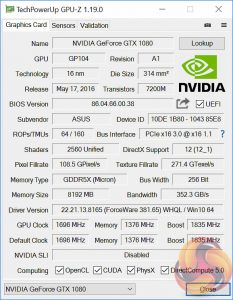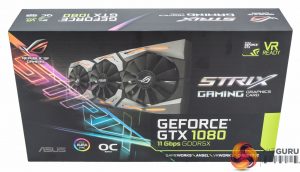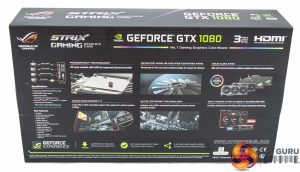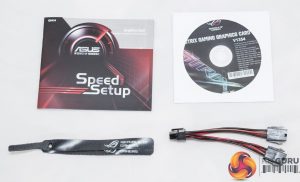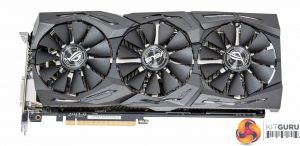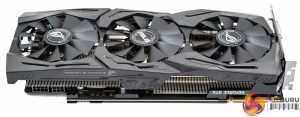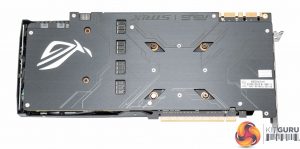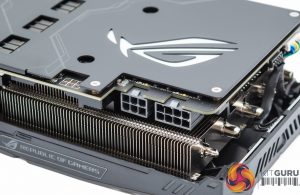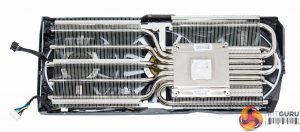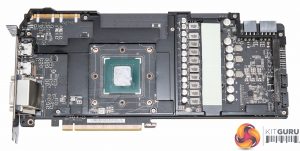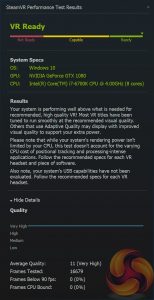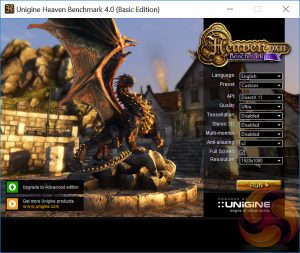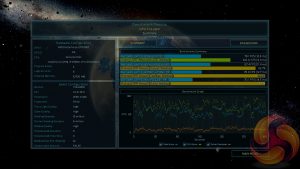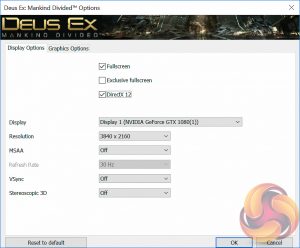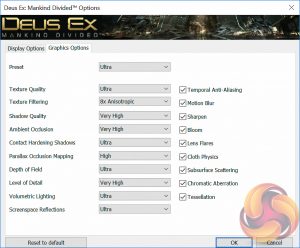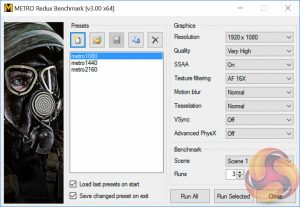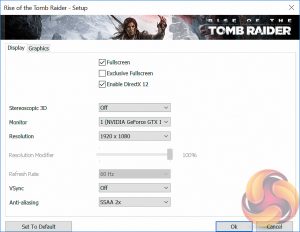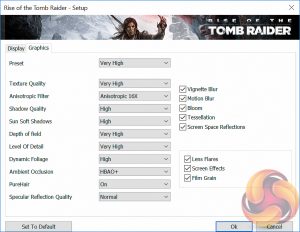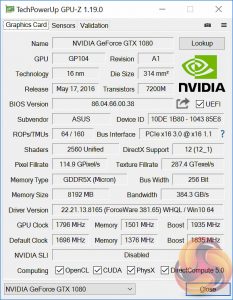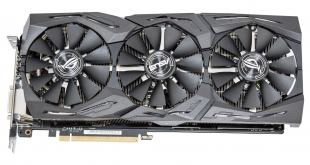
Nvidia graphics card partners have refreshed a number of GTX 1080 models to take advantage of faster 11Gbps Micron memory. ASUS were one of the first companies to participate in the new scheme from Nvidia that was announced at its 2017 GDC conference.
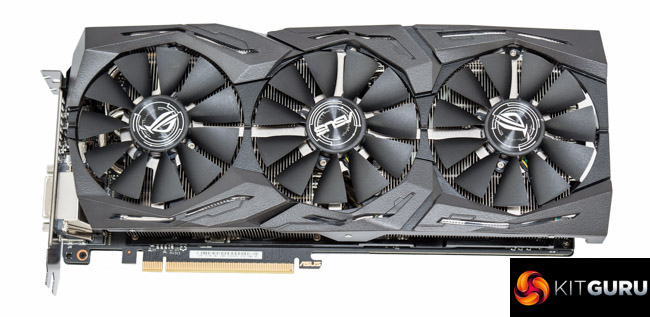
ASUS joins MSI in creating a new model specifically for 11Gbps memory modules. Nvidia partners are only allowed to include these uprated memory modules in overclocked models and so ASUS has rolled out the new memory configuration with its Republic of Gamers Strix OC graphics card.
In particular the model on test today is the ROG-STRIX-GTX1080-O8G-11GBPS, which causes the ROG-STRIX-GTX1080-O8G-GAMING to become End of Life (EOL) even if the newer ASUS 11Gbps model has slightly lower out-of-the-box frequencies. The slightly slower-clocked GTX 1080 Advanced Gaming, ROG-STRIX-GTX1080-A8G-GAMING, continues to remain on sale albeit at a more competitive price point and retaining the standard 10Gbps memory configuration.
There are a number of other ASUS GTX 1080 models in the picture, which can get a little confusing – but for all intents and purposes this refreshed model is the best ASUS GTX 1080 currently on sale. Frequencies aside the 11Gbps ASUS card is highly similar to the ASUS GTX 1080 ROG Strix A8G KitGuru tested last year.
This means it has a high performance cooling solution, backplate, full RGB functionality, GPU-controlled 4-pin fan headers and a PCB assembled using the ASUS Auto-Extreme production process.
Out of the box the ASUS graphics card will run in Gaming mode, the default mode, which gives a 1695MHz base and 1835MHz boost, with 11010MHz memory. Installing the ASUS GPU Tweak II software will enable the end user to toggle an OC mode that increases frequencies to 1721MHz base, 1860Mhz boost and 11100MHz memory.
Pricing is higher than most of its rivals with ASUS selling its new 11Gbps GTX 1080 close to the £600 level in the United Kingdom – somewhat exuberant pricing given that GTX 1080 Ti graphics cards currently start from around £650.
| GPU | ASUS ROG Strix GeForce GTX 1080 OC 11Gbps | ASUS ROG Strix GeForce GTX 1080 OC (08G) | ASUS ROG Strix GeForce GTX 1080 OC (A8G) | Nvidia GeForce GTX 1080 |
| Base Clock |
1695 MHz | 1759 MHz | 1670 MHz | 1607 MHz |
| GPU Boost Clock | 1835 MHz | 1898 MHz | 1809 MHz | 1733 MHz |
| Memory Clock Effective |
11010 MHz | 10010 MHz | 10010 MHz | 10010 MHz |
| Memory Bandwidth | 352.3 GB/s | 320.3 GB/s | 320.3 GB/s | 320.3 GB/s |
| Price (£) | £600 | EOL | £530-580 | £480+ |
Packaging for the ASUS GTX 1080 ROG Strix OC 11Gbps is well-presented and gives a concise overview of the product's key features including a nickel-plated contact plate for the cooler, IP5X-certified fans, ASUS Fan Connect II, AURA RGB and Auto Extreme.
The accessory bundle includes a speed setup guide, driver and utility CD, two ROG cable ties and a dual 6pin to single 8pin PCIe power cable adapter.
ASUS has a slight advantage over MSI due to the implementation of a neutral-looking black colour scheme. There is no red, yellow or any other colour, for that matter, to spoil the seamless integration into a variety of different builds.
The triple-fan design is prominent and should give ASUS an airflow advantage over the dual-fan design of the MSI GTX 1080 Gaming X Plus. Like virtually all graphics cards in this segment the GPU fans switch off when the temperature is below a temperature of around 55-60 degrees Celsius.
The ASUS fans are 90mm units and have IP5X certification which should mean a lower probability of failing over time from dust build up inside the bearing. The triple-fan design comes with a size penalty as the ASUS card measures in at 30cm long, 31.5cm including the rear I/O, and 12.5cm high, 14.5cm when including the rear I/O. It is longer than its MSI rival but not as tall since the 90mm fans do not require as much vertical space as MSI's 100mm fans.
The ASUS card creeps slightly beyond a dual-slot design but not by any significant amount, it can probably be called a “2 and a third” slot card if you were being very picky about compatibility.
At 1,228g, 1.2kg, the ASUS card weighs in at 128g more than MSI's card but the reinforced backplate on the ASUS card will prevent sagging from occurring over time.
ASUS equips a backplate but it's not full cover as it has cut-outs at various locations including the backs of the VRM components and a 6pin PCIe solder point that isn't used, which looks a little untidy. There is, however, an ROG logo which is included in the RGB LED setup for nifty lighting effects.
Power is drawn through a 6 pin and an 8 pin, Nvidia's reference design uses a single 8 pin.
The rear I/O also differs from the reference Nvidia design but ASUS does well to cover all the bases with dual HDMI 2.0 (useful for VR), dual DisplayPort 1.4 and a single DVI-D dual-link.
The cooler seems to vary from the unit KitGuru inspected with the ASUS ROG Strix OC GTX 1080 (A8G) back in late-2016. For starters there is a Nickel-Plated contact block, rather than direct contact copper heat pipes, which should lead to slightly increase effectiveness of the heatpipes that do not sit directly above the GPU core.
The heat-pipe arrangement is also slightly different with six 6mm heat pipes versus four 8mm and one 6mm on previous designs.
The PCB layout appears to be identical with a 10 phase (8+2) design that is assembled using a fully automated process, ASUS Auto Extreme, that should prevent inconsistencies and imperfections caused by human assembly error. ASUS continues to include two 4 pin fan headers that can control a pair of fans in line with the GPU temperature. This is rather than the motherboard fan headers which control fan behaviour in relation to CPU or motherboard temperature sensors.
Our GPU test system has been built with the intention of benchmarking a variety of graphics cards from mid-range to high-end. Each GPU is tested in a number of 3D applications and games at 1080p, 1440p and 2160p (“4K”) resolutions using Very High or Ultra detail presets.
Test System Components
- Case: Corsair 400Q (two stock case fans replaced with Noctua 120mm rear exhaust and 140mm front intake, speeds UEFI-limited)
- Processor: Intel Core i7-6700K (Stock Intel Turbo behaviour).
- Memory: 16GB (2x8GB) G.Skill Trident Z XMP (3200MHz 16-18-18-38 @ 1.35V).
- Graphics Card: Variable.
- System Drive: Samsung 850 EVO 512GB SSD
- CPU Cooler: Corsair H100i v2 (pump at 12 volts, fan speed UEFI-limited to reduce noise).
- Power Supply: Seasonic Platinum 760W.
- Operating System: Windows 10 Pro 64-bit.
General Test System Notes
- AMD Graphics cards were benchmarked with the AMD (Crimson ReLive Edition) 17.4.2 drivers (17.10.1711 Beta 5) except the RX 570 and RX 580 GPUs which were benchmarked with a special press release driver (17.10.1030 Beta 8).
- Nvidia Graphics cards were benchmarked with the Nvidia (GeForce Game Ready) 381.65 driver.
- To tune the test system appropriately for acoustic measurements the case was stripped of its original fans and fitted with ultra quiet Noctua fans.
- The CPU cooler, the Corsair H100i v2, was set to a fixed low fan speed to further reduce the base noise level while the pump was left to operate at full speed since it produces no significant noise output.
- The CPU was left to default Intel Turbo behaviour, disabling ASUS enhancements such as all-core Turbo to minimise heat output inside the case and non-GPU related power consumption. The CPU voltage was also negatively offset (read: reduced) by a measure of -0.15 to further reduce non-GPU related heat and power consumption and keep CPU temperatures down to accommodate for the ultra silent CPU and System fan profiles.
- Each 3D benchmark or game is run 3 times at each resolution with an average result of the three runs taken as the final result for the graphs. Where benchmark screenshots are shown note these may not match the graphed figure since the graph represents the average of three while the screenshot is a single of those three values
Comparison Graphics Cards List
- AMD RX 480 8GB (1266MHz core, 8000MHz memory)
- ASUS GTX 1080 ROG Strix OC 11Gbps (1696MHz core, 1835MHz boost, 11008MHz memory)
- ASUS RX 570 STRIX Gaming OC 4GB (1300MHz core, 7000MHz memory)
- Gigabyte Aorus GTX 1080 Ti Xtreme Edition 11GB (1607MHz core, 1721MHz boost, 11232MHz memory)
- Gigabyte GTX 1080 G1 Gaming 8GB (1695MHz core, 1835MHz boost, 10010MHz memory)
- Gigabyte GTX 980 Ti Xtreme Gaming Windforce 6GB (1216MHz core, 1317MHz boost, 7200MHz memory)
- MSI GTX 1080 Gaming X Plus 8GB (1683MHz core, 1823MHz boost, 11008MHz memory)
- MSI R9 390 8GB Gaming (1040MHz core, 6000MHz memory)
- Nvidia GTX 1060 6GB Founders Edition (1506MHz core, 1708MHz boost, 8008MHz memory)
- Nvidia GTX 1080 Ti Founders Edition 11GB (1480MHz core, 1582MHz boost, 11008MHz memory)
- PNY GTX 1070 XLR8 Gaming OC 8GB (1607MHz core, 1797MHz boost, 8008MHz memory)
- Sapphire R9 Fury X 4GB (1050MHz core, 1000MHz memory [HBM])
- Sapphire RX 470 Nitro+ OC 4GB (1260MHz core, 7000MHz memory)
- Sapphire RX 580 Nitro+ Limited Edition 8GB (1450MHz core, 8000MHz memory)
- Zotac GTX 970 4GB (1076MHz core, 1216MHz boost, 7010MHz memory)
Software and Games List
- 3DMark
- Ashes of the Singularity
- Deus Ex: Mankind Divided
- Furmark
- GPU-Z
- Grand Theft Auto V
- Metro Last Light Redux
- MSI Afterburner
- Rise of the Tomb Raider
- Steam
- SteamVR Performance Test
- Unigine Heaven
3DMark is a showcase DirectX 11 benchmark designed for today’s high-performance gaming PCs. It is our [FutureMark’s] most ambitious and technical benchmark ever, featuring real-time graphics rendered with detail and complexity far beyond what is found in other benchmarks and games today.
We run 3DMark Fire Strike (1080p), Fire Strike Extreme (1440p) and Fire Strike Ultra (4K).
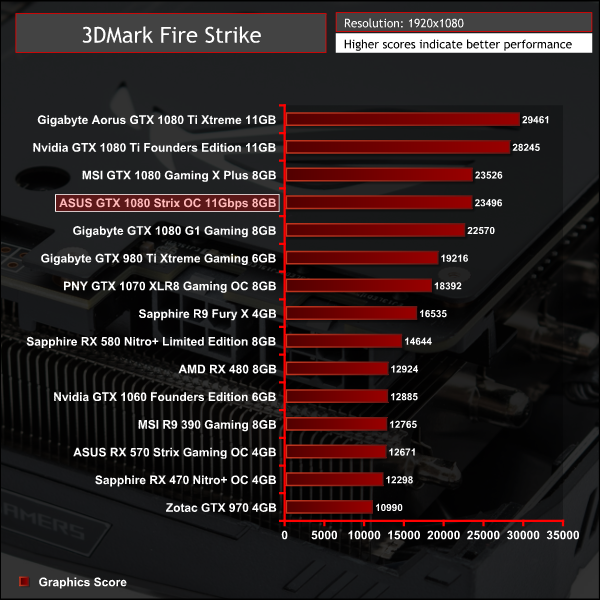
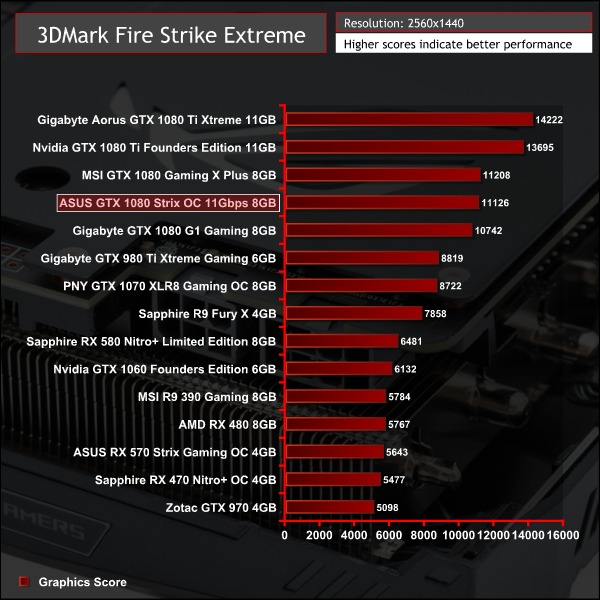
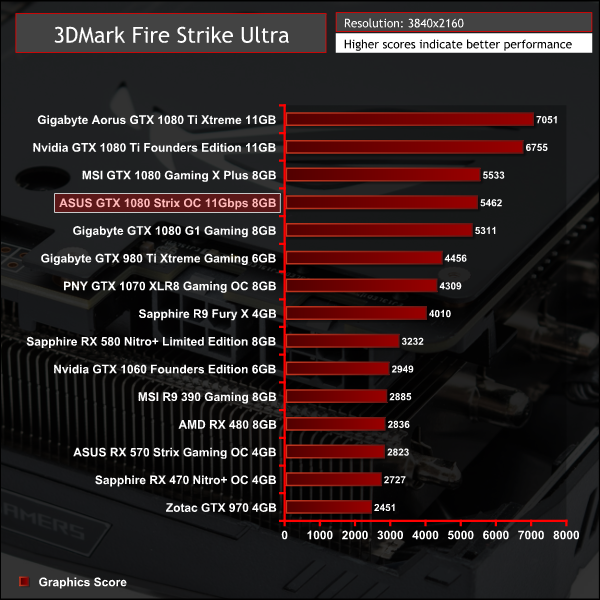
In theory the ASUS ROG STRIX 11Gbps GTX 1080 should be faster than MSI's GTX 1080 Gaming X Plus as it has an extra 12MHz of frequency on the core. However, across a number of benchmarks it fell behind while in others it lead the way.
Clearly the actual effective GPU core clock varies by some margin which leaves the two rival graphics cards performing very closely to each other.
The SteamVR Performance Test measures a system's rendering power using a 2-minute sequence from Valves Aperture Robot Repair VR demo. After collecting the data it determines whether a system is capable of running VR content at 90fps and whether VR content can tune the visual fidelity up to the recommended level. For machines that are not VR Ready the tool can help determine whether capabilities are bound by Graphics Card, CPU, or both.
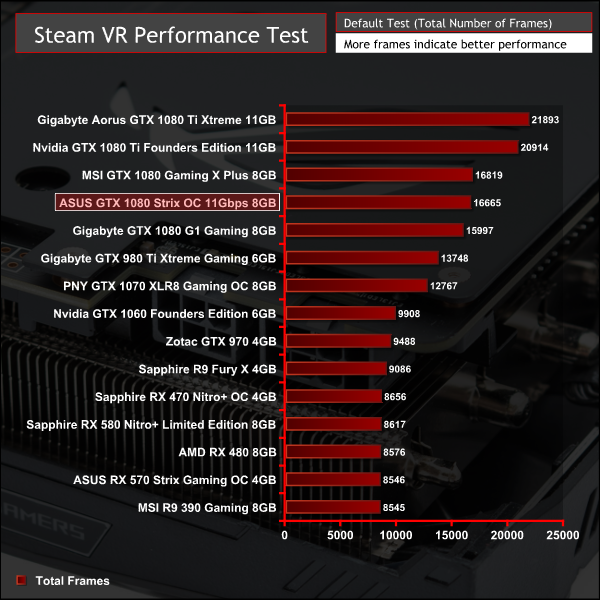
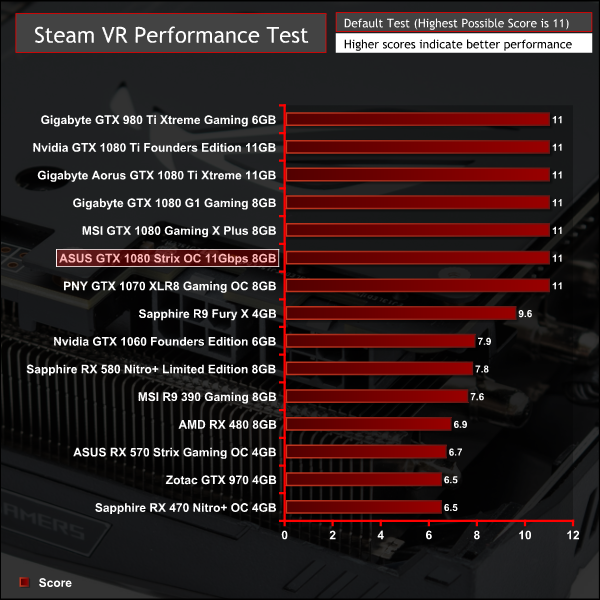
Any GTX 1080 is an excellent choice for VR but the 11Gbps models have a little bit more “oomph” than their 10Gbps counterparts.
Unigine provides an interesting way to test hardware. It can be easily adapted to various projects due to its elaborated software design and flexible toolset. A lot of their customers claim that they have never seen such extremely-effective code, which is so easy to understand.
Heaven Benchmark is a DirectX 11 GPU benchmark based on advanced Unigine engine from Unigine Corp. It reveals the enchanting magic of floating islands with a tiny village hidden in the cloudy skies. Interactive mode provides emerging experience of exploring the intricate world of steampunk. Efficient and well-architected framework makes Unigine highly scalable:
- Multiple API (DirectX 9 / DirectX 10 / DirectX 11 / OpenGL) render
- Cross-platform: MS Windows (XP, Vista, Windows 7) / Linux
- Full support of 32bit and 64bit systems
- Multicore CPU support
- Little / big endian support (ready for game consoles)
- Powerful C++ API
- Comprehensive performance profiling system
- Flexible XML-based data structures
We set Quality to ‘Ultra’, Tessellation to ‘disabled’ and Anti-Aliasing to 2x.
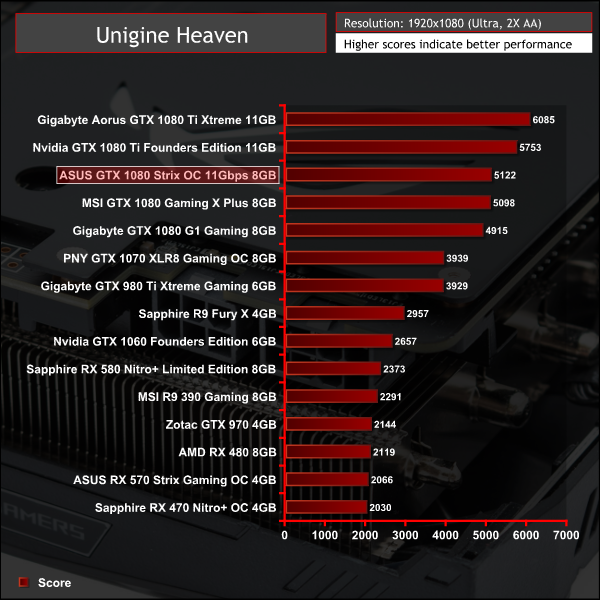
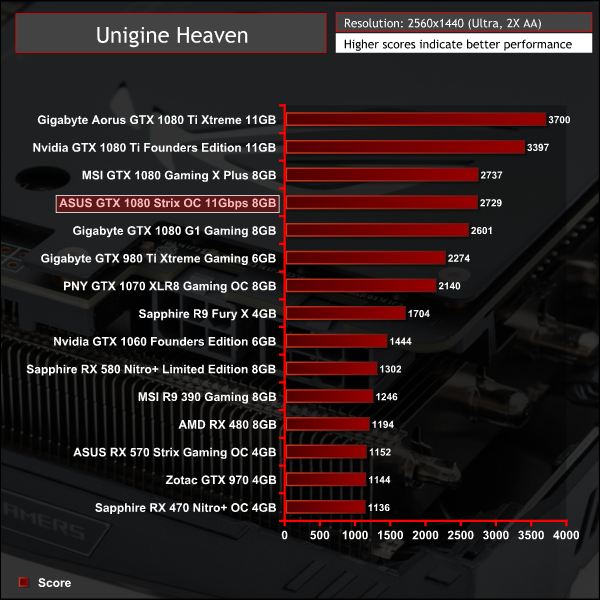
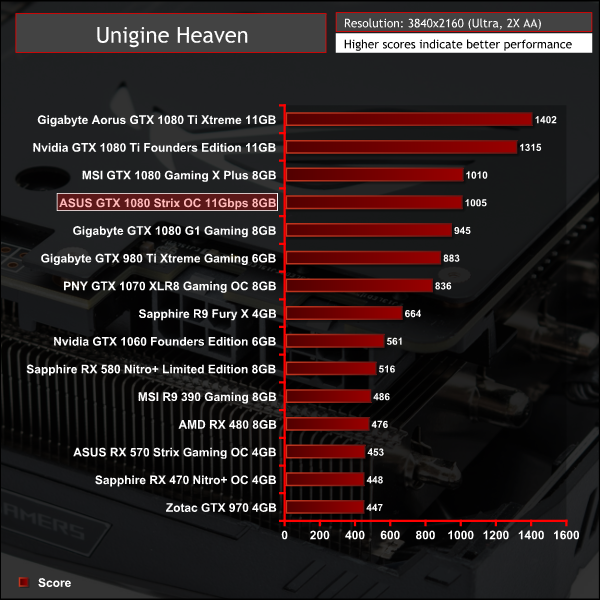
Ashes of the Singularity is a real-time strategy game set in the future where descendants of humans (called Post- Humans) and a powerful artificial intelligence (called the Substrate) fight a war for control of a resource known as Turinium.
Players will engage in massive-scale land/air battles by commanding entire armies of their own design. Each game takes place on one area of a planet, with each player starting with a home base (known as a Nexus) and a single construction unit.
We opt for the Extreme quality profile and run the GPU-Focused test using the DX12 game mode.
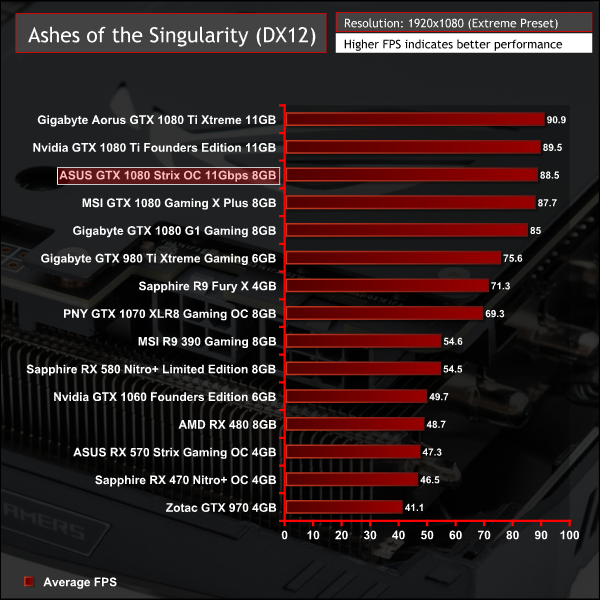
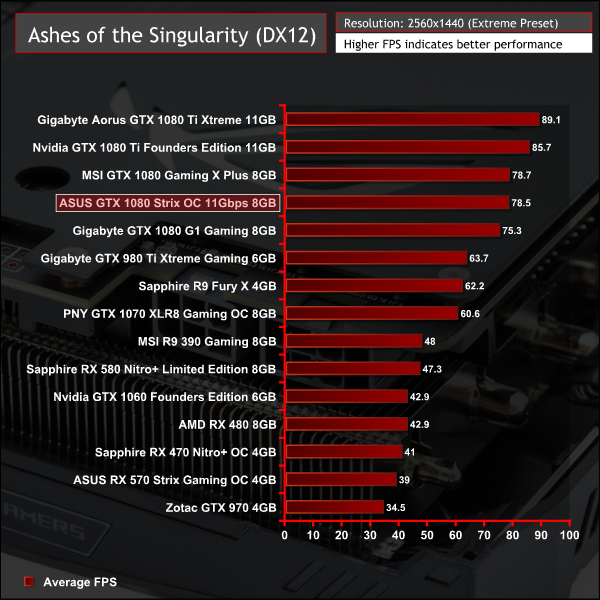
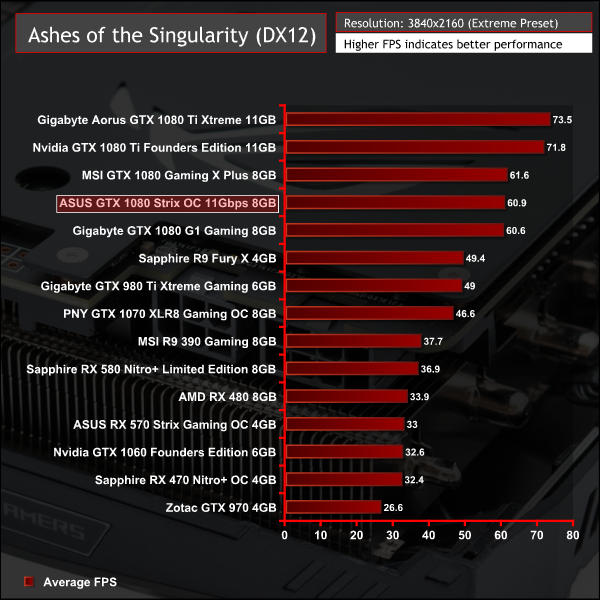
Deus Ex: Mankind Divided is set in the year 2029, two years after the events of Human Revolution and the “Aug Incident”—an event in which mechanically augmented humans became uncontrollable and lethally violent.
Unbeknownst to the public, the affected augmented received implanted technology designed to control them by the shadowy Illuminati, which is abused by a rogue member of the group to discredit augmentations completely. (Wikipedia).
We test using the Ultra quality preset and the DirectX 12 API at all resolutions.
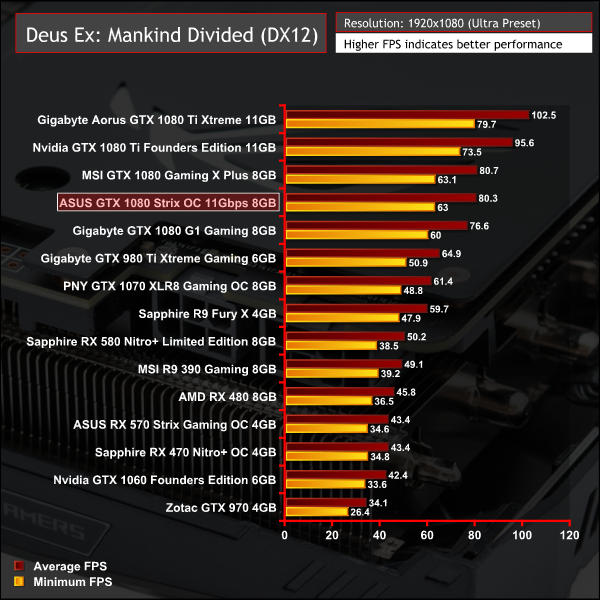
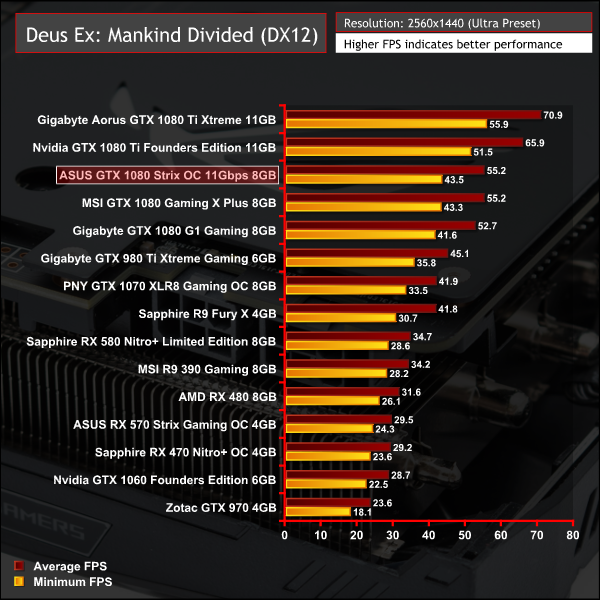
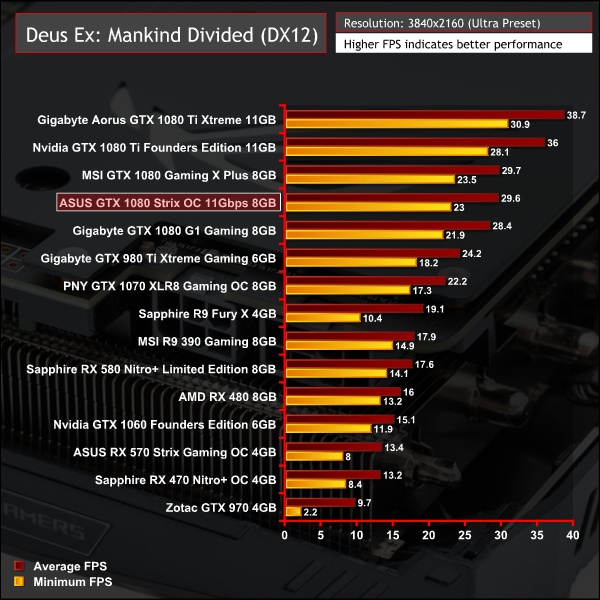
Grand Theft Auto V is an action-adventure game played from either a first-person or third-person view. Players complete missions—linear scenarios with set objectives—to progress through the story. Outside of missions, players may freely roam the open world.
Composed of the San Andreas open countryside area and the fictional city of Los Santos, the world is much larger in area than earlier entries in the series. It may be fully explored after the game’s beginning without restriction, although story progress unlocks more gameplay content.
We use the Ultra quality settings (or the highest alternative when Ultra is unavailable), MSAA is set to 2x. The Advanced Graphics options are all set to their maximum levels. Memory usage is calculated as 3469, 3764 and 4733 at 1080, 1440p and 4K, respectively.
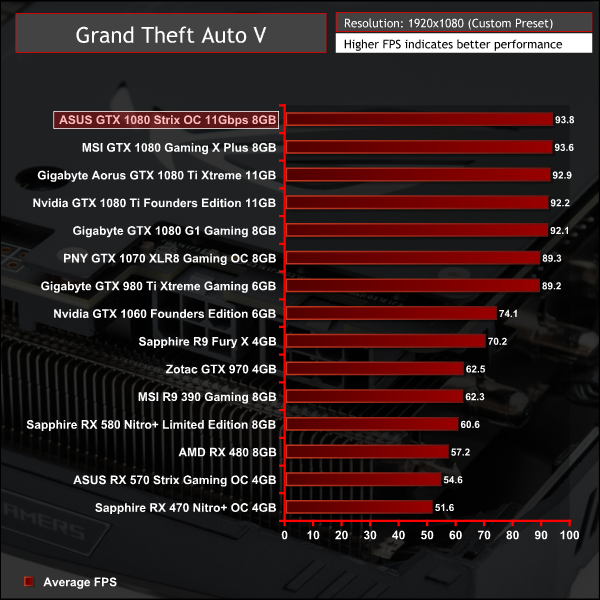
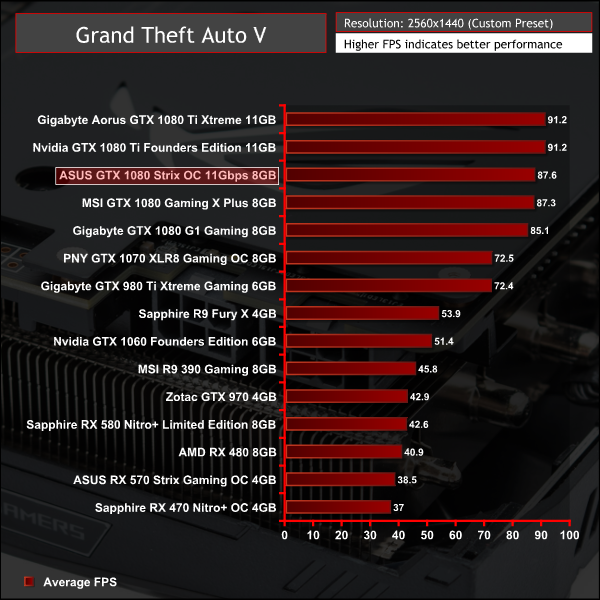
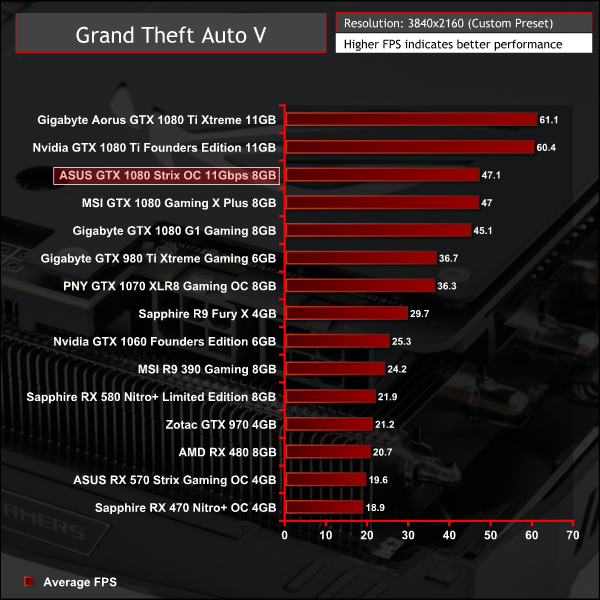
Just like the original game Metro 2033, Metro: Last Light is played from the perspective of Artyom, the player-character. The story takes place in post-apocalyptic Moscow, mostly inside the metro system, but occasionally missions bring the player above ground. Metro: Last Light takes place one year after the events of Metro 2033, following the canonical ending in which Artyom chose to proceed with the missile strike against the Dark Ones (this happens regardless of your actions in the first game). Redux adds all the DLC and graphical improvements.
At all resolutions we test using a Very High quality profile with SSAA enabled and Tessellation set to Normal.
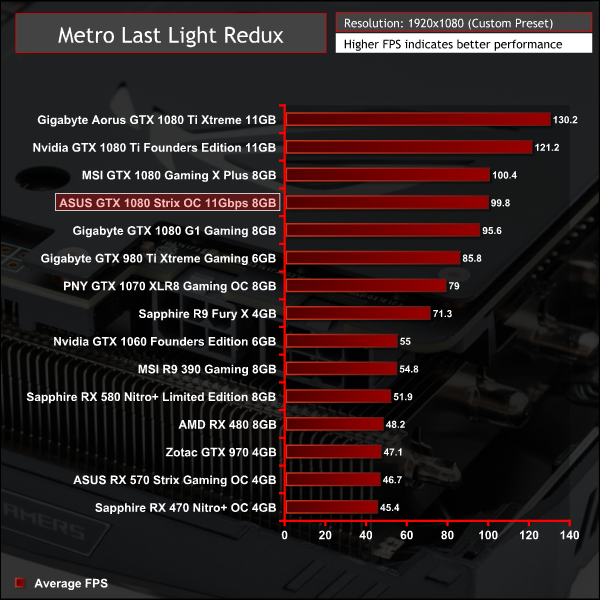
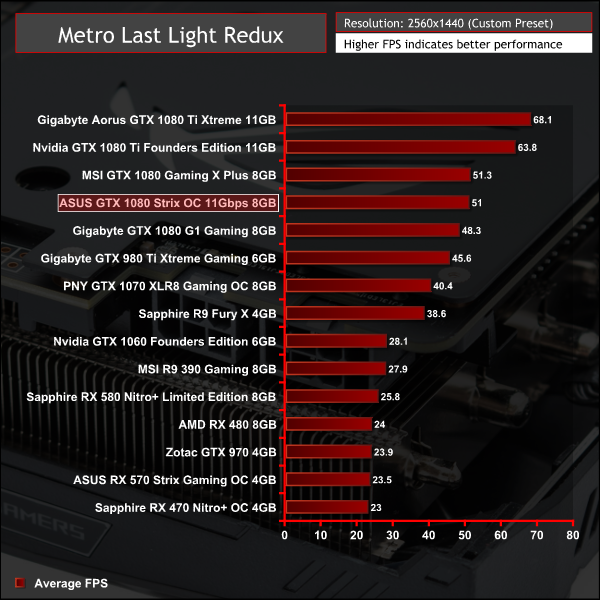
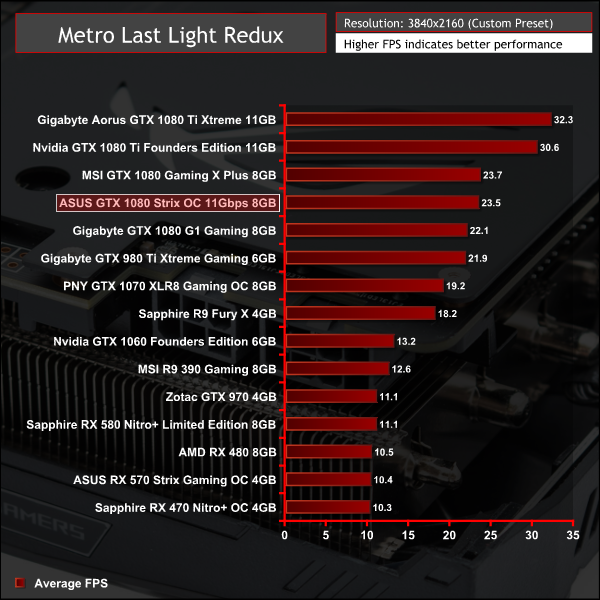
Rise of the Tomb Raider is a third-person action-adventure game that features similar gameplay found in 2013’s Tomb Raider. Players control Lara Croft through various environments, battling enemies, and completing puzzle platforming sections, while using improvised weapons and gadgets in order to progress through the story. It uses a Direct X 12 capable engine.
We use the Very High quality preset and 2x SSAA at all resolutions with Direct X 12 enabled.
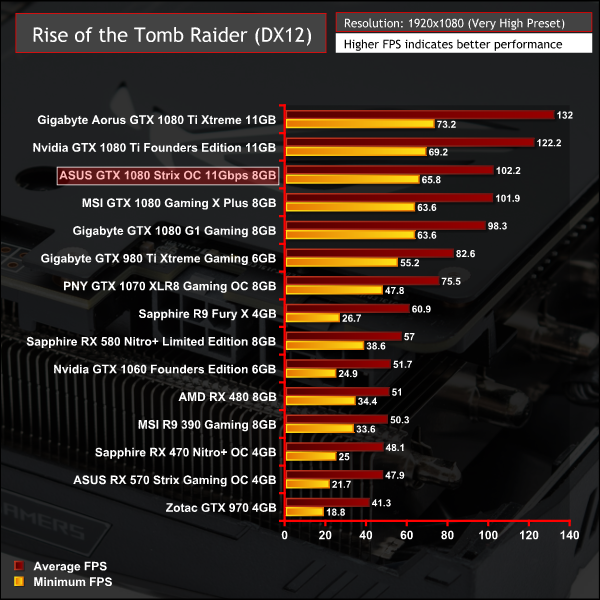
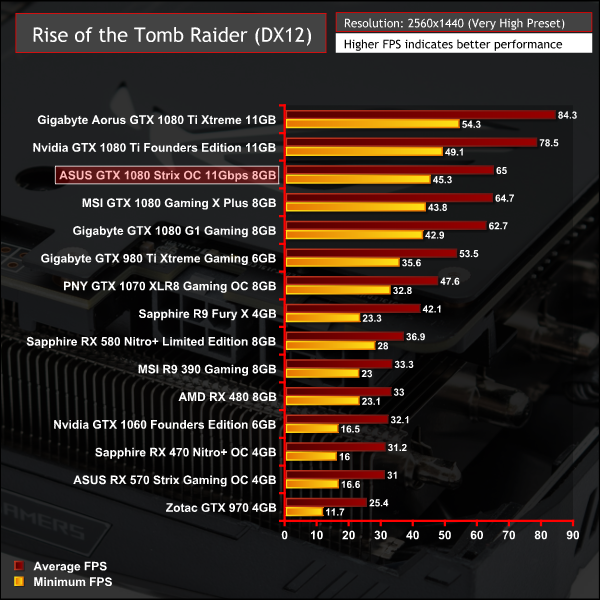
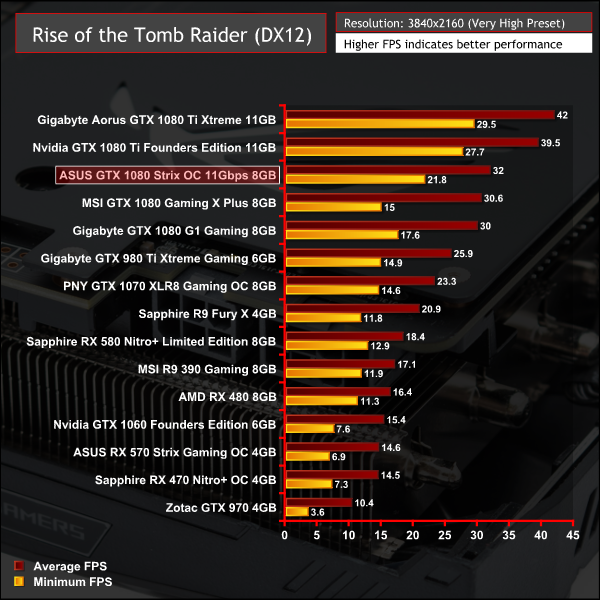
After all the game tests are complete it is clear to see the difference between the ASUS and MSI GTX 1080 graphics cards with the 11Gbps memory is slim. Any significant differences between the two is down to random variability in benchmark performance and any effective clock speed differences in GPU Boost behaviour.
Our acoustic measurements are less precise on this mid-range test system, the noise floor of the totally quiet testing room is 34 dBA as measured with a Benetech GM1351 Digital Sound Level Meter.
We take our measurements with the decibel meter on the top and middle section of the case, overhanging the side panel (PSU side, not Motherboard tray side) by exactly 1 inch to avoid any airflow pressure coming from the exhausting H100i V2.
The underlying noise level of the system, emitted by all the non-GPU hardware combined, is 35 dBa thus anything above this level can be attributed to the graphics cards. The PSU is passive for the entire power output range we tested all graphics cards in and all CPU and System fans have a fixed fan speed completely isolating them from any changes in temperature across the system.
Noise levels were measured after 5 minutes of load under three scenario: Furmark, Unigine Heaven and desktop idle in sequential order with 2 minutes downtime in between each test.
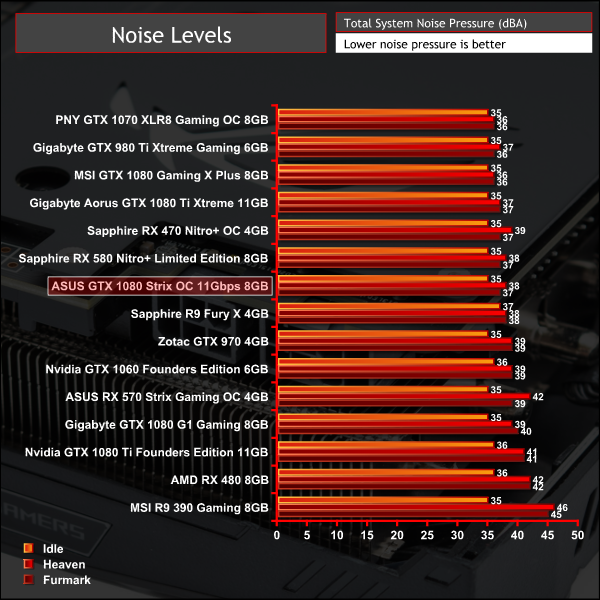
Noise levels were low and this graphics card is impressively quiet under all usage scenarios. In our testing it wasn't as quiet as MSI's Gaming X Plus version but the difference in noise is slight and certainly not uncomfortable. There was also no notable coil whine on our test sample.
Temperatures were measured after 5 minutes of load under three scenario: Furmark, Unigine Heaven and desktop idle in sequential order with 2 minutes of downtime in between each test. GPU-Z was used to record the maximum temperature, fan profiles on GPUs were left to their default behaviour.
Delta temperatures are presented below to account for small fluctuations in room temperature, but for all the testing present in this graph the temperature ranged from 21.6 to 23.1 degrees Celsius.
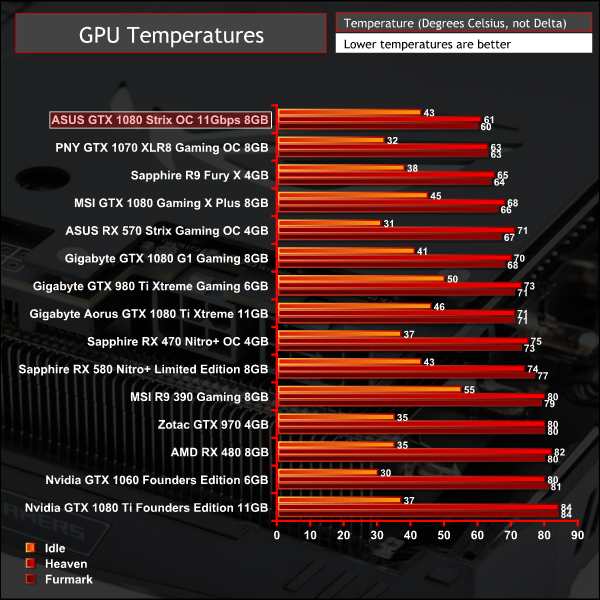

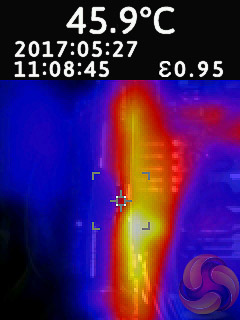
GPU core temperatures were stupendously good and given that the ASUS card is slightly louder than its rivals it would make sense for ASUS to slacken off the default fan profile in favour of lower noise.
PCB temperatures were acceptable but the exposed VRM components reached into the mid-70s during our stress testing.
ASUS possibly left these exposed as ambient case airflow is better at removing heat than a backplate, however, we've seen lower temperatures on graphics cards with full cover backplates. That said, temperatures in the 70s are perfectly reasonable and are no cause for long-term concern.
Power consumption was measured after 5 minutes of load under three scenario: Furmark, Unigine Heaven and desktop idle in sequential order with 2 minutes of downtime in between each test. The measurement was taking using an Energenie ENER007 power meter and measured for the whole system at the power supply, excluding the monitor.
While Furmark and desktop idle provide stable and consistent power read-outs, Unigine Heaven does not so the power reading is taken as the peak value that occurs in Scene 2 of 26.
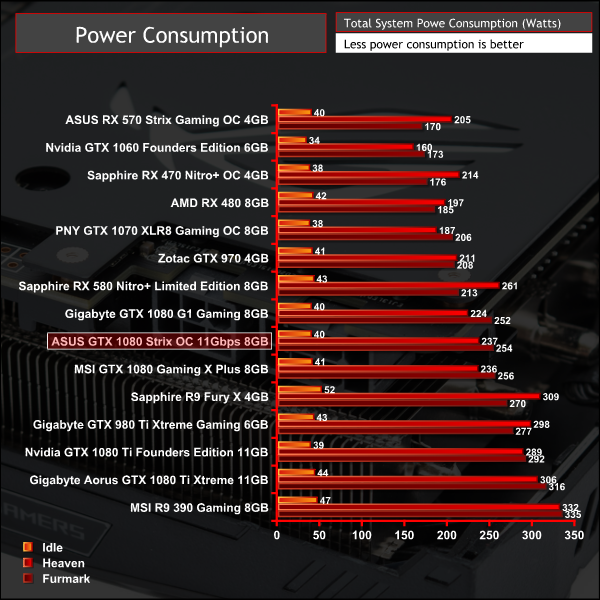
Power consumption is typical of an overclocked GTX 1080, no surprises here.
Overclocking frequencies will always vary between GPUs so the performance of review units is not to be taken as representative of how retail cards would behave.
The ASUS card we tested became unstable beyond 1796 (1935) MHz core and 1501 MHz memory. This frequency increase across the core and memory resulted in an approximately 7 per cent overall boost to 3D performance in 3DMark.
The MSI GTX 1080 Gaming X Plus model achieved 1833 (1973) MHz core and 1501 MHz memory, for reference, which was slightly higher and gave slightly better performance, 5943 in the below test.
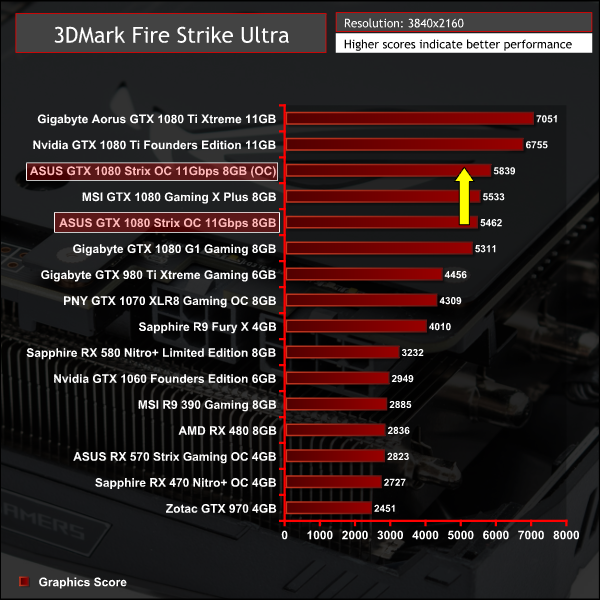
The ASUS GTX 1080 ROG Strix OC 11Gbps is an excellent choice for consumers seeking a well-built graphics card with a highly effective cooling solution. This ASUS GPU had the lowest core temperatures of all 15 graphics cards on test, hardly exceeding 60 degrees Celsius even during prolonged usage scenarios.
Like the ASUS ROG Strix GTX 1080 A8G KitGuru has already reviewed, the 11Gbps model is a strong performer in all areas- noise, performance, power and temperatures, with a decent amount of overclocking headroom to spare as well.
Compared to existing models there is a price premium for the 11Gbps that will make most buyers think twice before purchasing. In general the ASUS GTX 1080 11Gbps is around £600 at the time of writing, which leaves it uncomfortably close to many GTX 1080 Ti graphics cards that can be had from £650 for buyers willing to shop around.
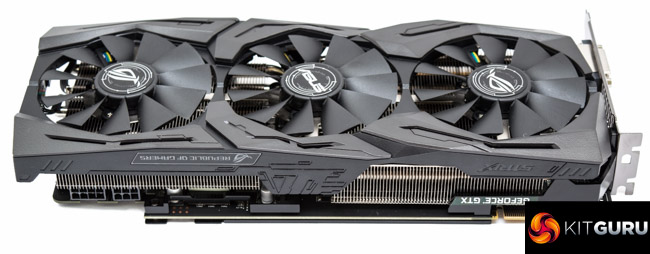
That price premium is also slightly concerning relative to rival GTX 1080s which tend to be closer to £500, including MSI's GTX 1080 Gaming X Plus which also sports 11Gbps memory and a similar overall level of performance, cooling efficiency and features.
That said, the ASUS ROG brand has always come at a premium and prospective buyers do get a high level of quality and a number of innovative features for that extra money. Some of those features, like ASUS Fan Connect II, IP5X fans and Auto Extreme, have little real-world impact but are typical of the premium extras that ROG products tend to deliver.
Consumers guided by budgetary constraints will lean more towards rival GTX 1080 solutions, particularly MSI's offering, though consumers looking for the best overall solution should consider the ASUS 11Gbps GTX 1080. The only real gripe, aside from pricing, is that the ASUS fan profile is perhaps too aggressive given how the GPU core temperatures are, though it still remains a very quiet graphics card.
The ASUS GTX 1080 ROG Strix OC 11Gbps is available to purchase from Overclockers UK for £589.99. ASUS provides a 3 year warranty with this product.
Discuss on our Facebook page, over HERE.
Pros
- Highly effective cooling solution.
- GPU-controlled fan headers.
- AURA RGB lighting.
- Passive fan mode.
- dual HDMI for VR users.
- Decent performance boost from 11Gbps memory.
Cons:
- Overclocked frequency not high enough for the price point.
- Fan profile should be less aggressive to account for the plentiful thermal headroom.
KitGuru says: ASUS delivers an innovative and high-quality GTX 1080 implementation with the faster 11Gbps memory, though it's high price tag will make thrifty buyers think twice.
Be sure to check out our sponsors store EKWB here
 KitGuru KitGuru.net – Tech News | Hardware News | Hardware Reviews | IOS | Mobile | Gaming | Graphics Cards
KitGuru KitGuru.net – Tech News | Hardware News | Hardware Reviews | IOS | Mobile | Gaming | Graphics Cards


